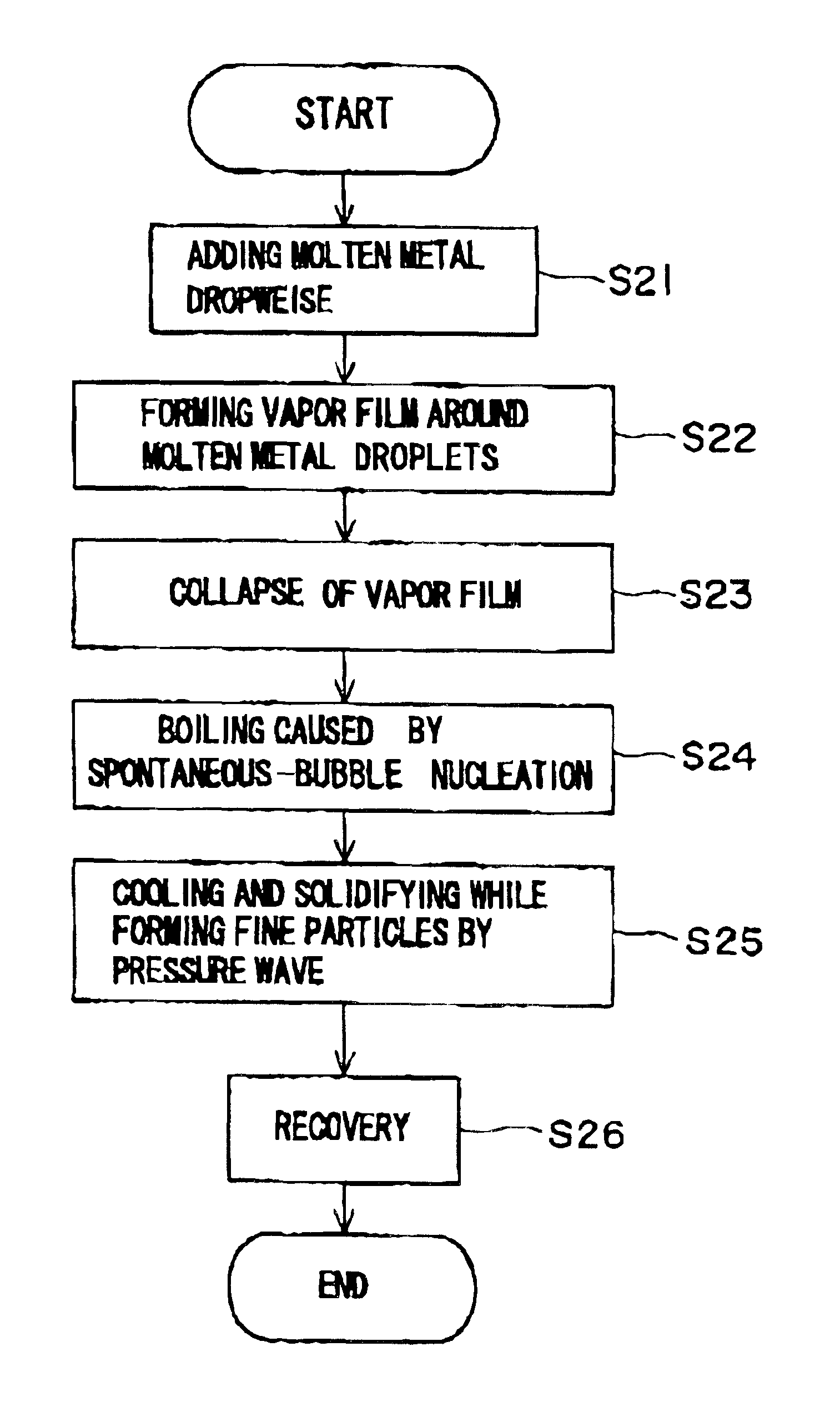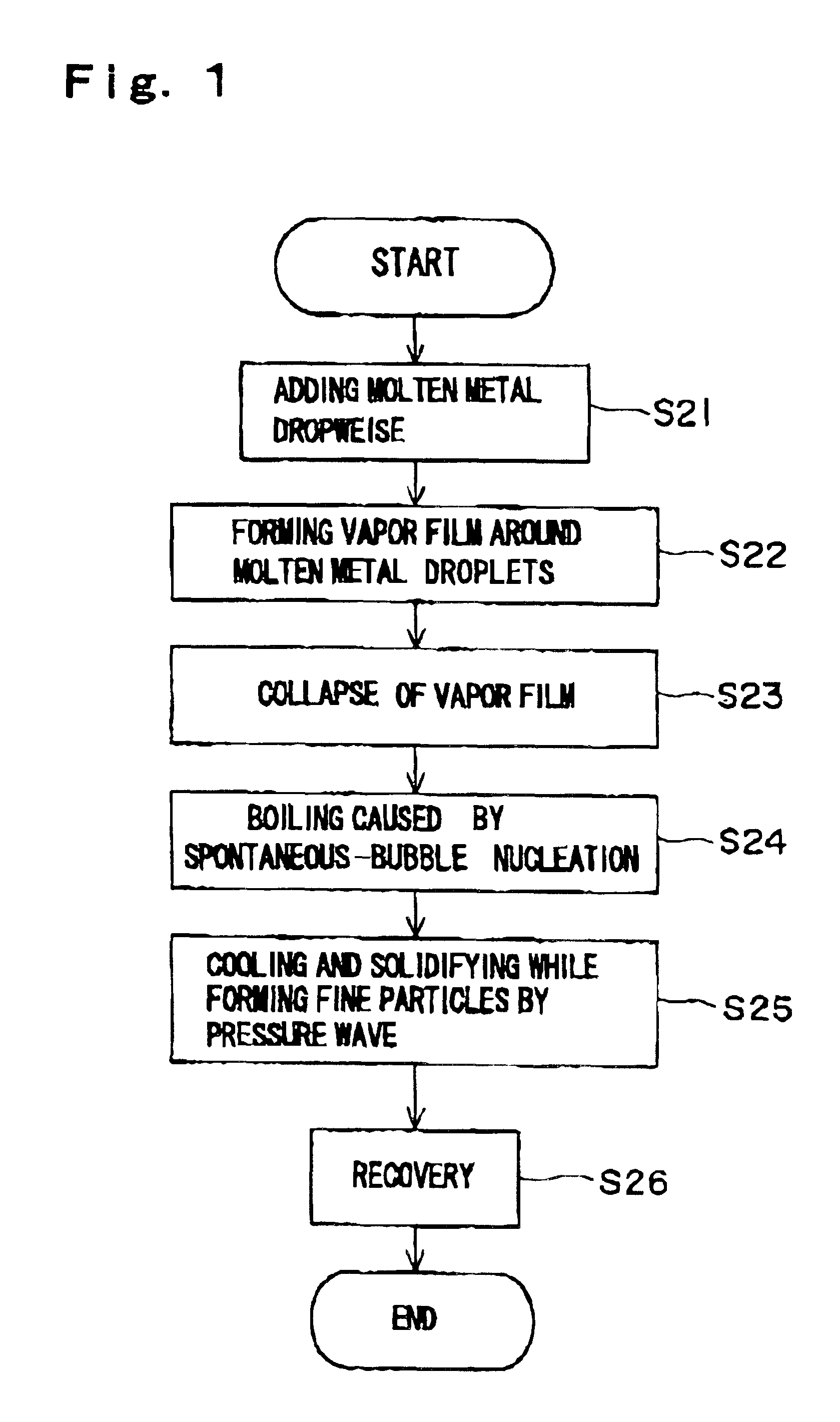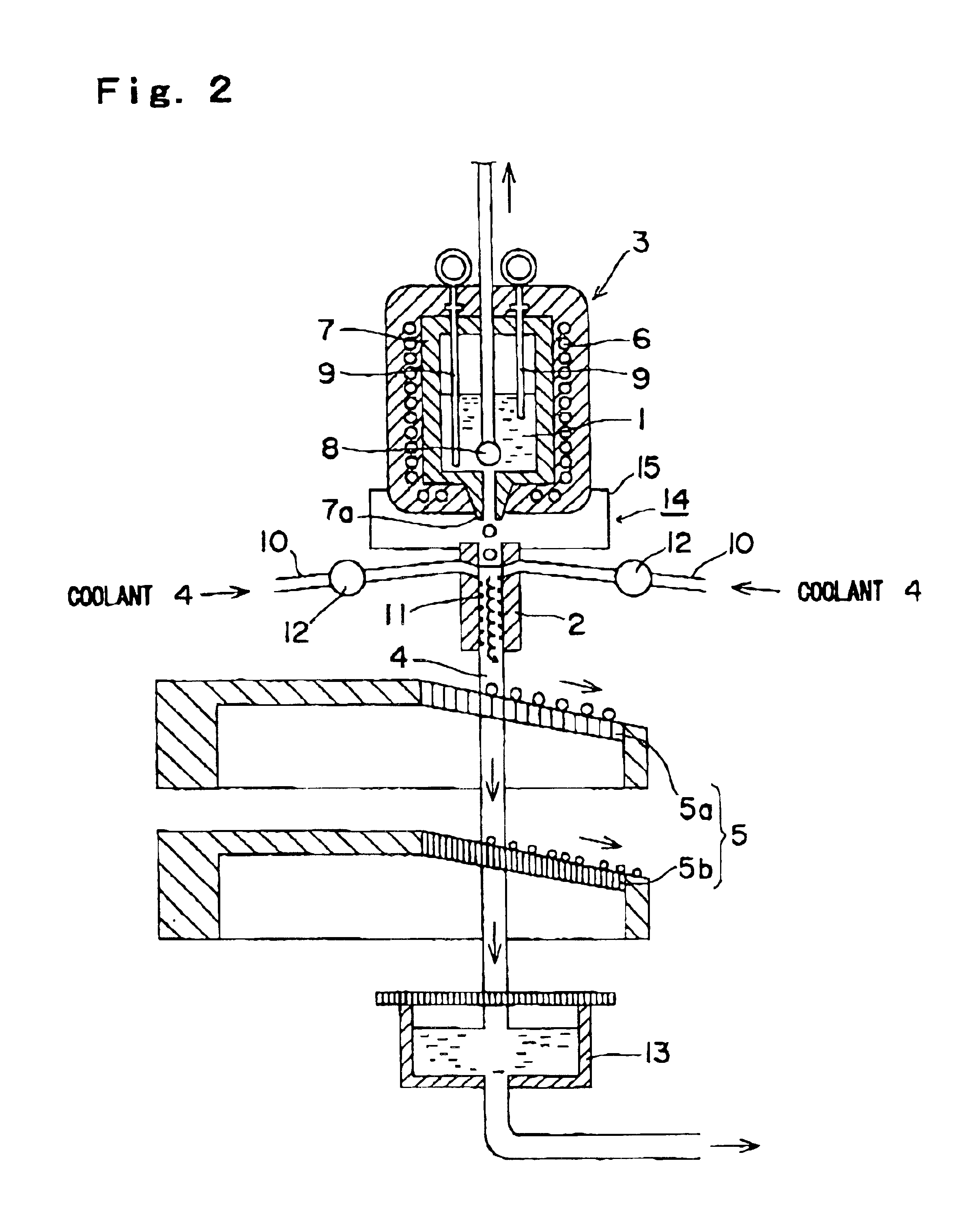Method and apparatus for producing fine particles, and fine particles
a technology of fine particles and apparatuses, applied in the direction of auxillary shaping apparatus, ceramic shaping apparatus, manufacturing tools, etc., can solve the problems of collapse, condensation, collapse, etc., and achieve the effect of reducing the incidence of accidents or failures, and forming fine particles of molten materials
- Summary
- Abstract
- Description
- Claims
- Application Information
AI Technical Summary
Benefits of technology
Problems solved by technology
Method used
Image
Examples
Embodiment Construction
[0038]The structure of the present invention will now be described in detail hereinafter based on the illustrated best mode.
[0039]FIG. 1 shows an example of an application of the method for producing fine particles devised in the present invention to a production of metal fine particles, and FIGS. 2 to 4 show an example of an apparatus to which the present invention is applied for producing metal fine particles. This production apparatus includes: material supplying means 3 which supplies a molten metal 1 as the molten material having a raw material to be fragmented into fine particles being molten therein while controlling the supply quantity thereof; a cooling section 2 which introduces a coolant 4 which cools and solidifies the molten metal 1, mixes the coolant 4 with the molten metal 1 fed from the material supplying means 3, forms a vapor film which covers the molten metal 1, collapses the vapor film, directly brings the molten metal 1 into contact with the coolant 4, cools the...
PUM
| Property | Measurement | Unit |
|---|---|---|
| size | aaaaa | aaaaa |
| size | aaaaa | aaaaa |
| size | aaaaa | aaaaa |
Abstract
Description
Claims
Application Information
 Login to View More
Login to View More - R&D
- Intellectual Property
- Life Sciences
- Materials
- Tech Scout
- Unparalleled Data Quality
- Higher Quality Content
- 60% Fewer Hallucinations
Browse by: Latest US Patents, China's latest patents, Technical Efficacy Thesaurus, Application Domain, Technology Topic, Popular Technical Reports.
© 2025 PatSnap. All rights reserved.Legal|Privacy policy|Modern Slavery Act Transparency Statement|Sitemap|About US| Contact US: help@patsnap.com



